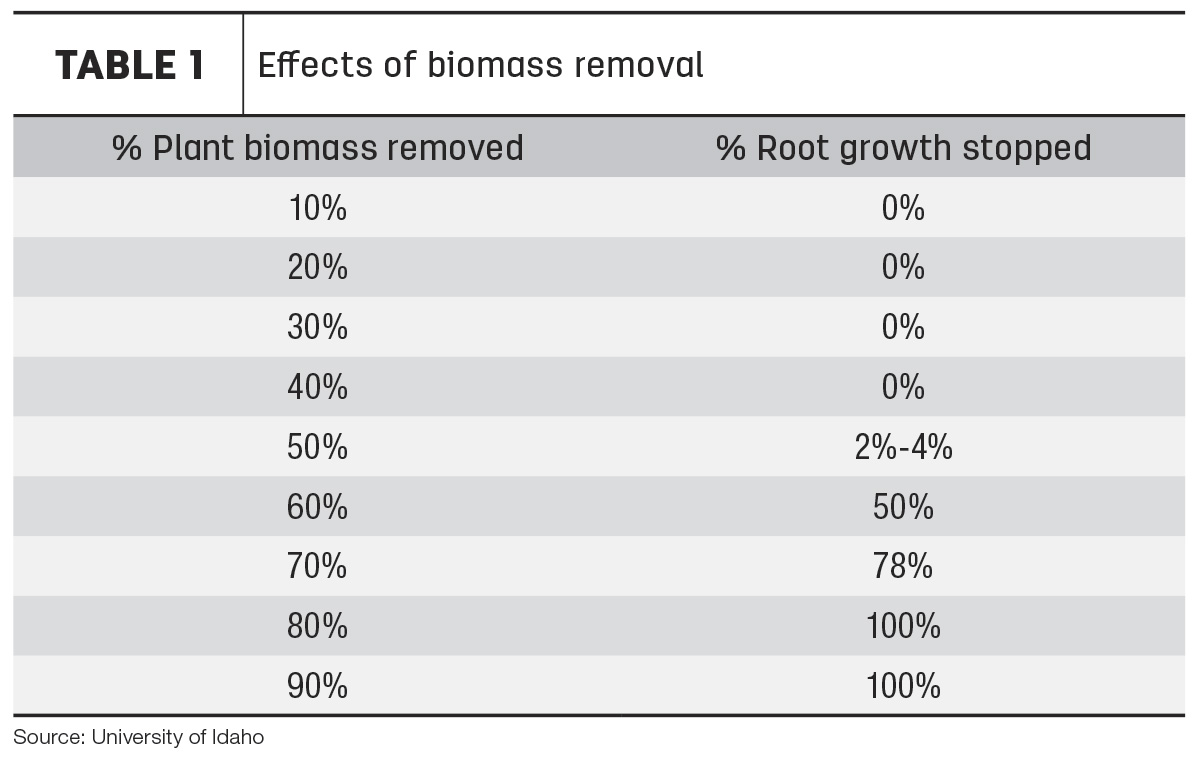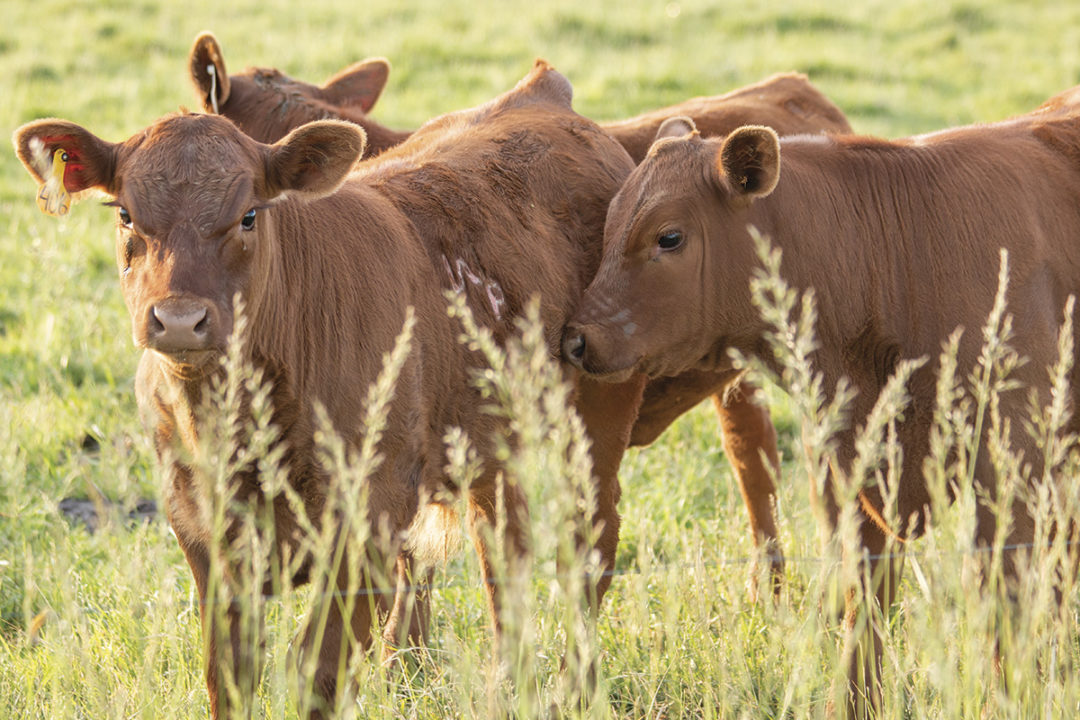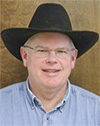Feed costs typically exceed 50% of the total cost of producing beef. Using cattle to graze standing forage can significantly reduce feed costs and aid in decreasing the cost of production.
The basis of a successful livestock grazing system is proper management of the forage resource or pasture. Climate, soil characteristics, available water, and plant species all affect pasture production and longevity. However, proper grazing management is the single most important factor under our control that affects forage quality and quantity. Forage quality and quantity will, in turn, affect stocking rate, daily gain, reproductive success, and general animal health and vigor.
One of the most basic needs of the pasture plant is the ability to capture solar energy through the process of photosynthesis. This process mainly occurs in the chloroplasts of the leaves. Plants that have had most or all of the stem and leaf material removed through grazing or cutting have a diminished ability to photosynthesize and must rely on energy reserves from the crowns to generate new growth. Consequently, recovery from grazing/cutting is much slower. Plant vigor and longevity can be reduced if the plants are regrazed before they have sufficiently recovered. If this process is continually repeated, a thinning or loss of the most desirable species occurs.
The amount of residual (living plant material left after grazing or clipping) also affects the roots of the plant. Research conducted in 1961 by Alexander Johnston showed plant biomass removal above 50% has a detrimental effect on plant roots (Table 1). This reduction of root growth not only affects the plant’s ability to recover from grazing but can also lead to an increase in bare soil and the invasion of weeds or less desirable plant species.

The growth of cool-season pasture plants (both above and below ground) slows considerably during the heat of summer. Plants in nonirrigated areas often go through a period of dormancy during summer. In either case, proper grazing management requires that sufficient residual be left standing to provide the plant with the energy needed to rapidly initiate growth once growing conditions become favorable. If plants are grazed below appropriate residual or stubble heights, growth following a dormancy period will be much slower and the amount of time required before the pasture is ready to graze will be lengthened. Total annual forage production of the pasture will also decrease.
Water availability is a major limiting factor in pasture production. Water is vital to the photosynthetic process. When moisture is limited, the stomata in plants close, and the photosynthetic process stops. This, in effect, stops plant growth. Irrigated pastures should be managed to maintain a soil moisture level of 50% or more available moisture in the root zone of the plants.
Actual water needs (both frequency and quantity of application) on irrigated pasture will vary with such factors as soil type, ambient temperature, plant density, plant residual, etc. Clay soils have a higher water-holding capacity than sandy soils. Soils with high levels of organic matter will also hold more water. Sandy or shallow soils have limited water-holding capacity and need more frequent irrigations to keep plants growing. Pasture plants will typically require 0.2 to 0.3 inches of moisture per day during the growing season, depending on conditions. In dryland (nonirrigated) areas as well as in irrigated areas, leaving adequate ground cover can help to conserve soil moisture and increase forage production.
One of the most frequently asked questions regarding pasture is what plant species are best for any given area. The reality is that it “depends.” While certain plant species will perform better in specific circumstances, over time, pasture plant species composition and performance will mainly be determined by the management of the grazing animals. Oftentimes, productive species, such as orchard grass, tall fescue, and meadow brome, are planted in irrigated pasture ground and then repeatedly and severely grazed. Over time, these species give way to less productive plant species, such as Kentucky bluegrass and white clover, which can better tolerate that type of management. In a very real sense, plant whatever you want, but over time, you will get exactly what you manage for.
Grazing management is the single most important factor affecting forage quality and production. Pastures should not be grazed until the plants have recovered from the previous grazing, cutting event or dormancy period. For most cool-season grasses, this equates to approximately 8 inches of total growth. Plants should not be allowed to grow beyond approximately 12 inches unless they are going to be cut for hay. When plants are allowed to grow beyond that, they begin to enter a reproductive phase and the growth rate drops, nutritional quality decreases and the plants require a longer rest period to recover for the next grazing event.
Pasture managers should rotate livestock to leave the necessary residual required for prompt pasture recovery from grazing. The necessary residual will vary according to the plant species that are being managed. For example, Kentucky bluegrass, white clover and ryegrass require a minimum of 2 inches of residual for prompt recovery. Orchardgrass, tall fescue, meadow brome and most other pasture species – including legumes – do best with a 4-inch minimum residual.
While a 4-inch residual might cause one to concern over “wasting” grass, it is important to recognize the benefits to both pasture and livestock. Pastures will recover more quickly and require shorter rest periods since they have more photosynthetic area. This will result in increased forage production over the length of the growing season. Livestock will benefit through increased bite size and, thus, increased intake. This translates into better performance of the cattle.
The speed of recovery is also influenced by additional factors. Available moisture, nutrient availability, forage species, and ambient temperature will affect growth and recovery rates. The timing of the plant’s growing cycle in which grazing occurs also plays a significant role in plant growth and recovery rates. Grazing rotations should be adjusted to reflect the growth rate of the pasture.
What can attention to these details do for you? I was speaking with a producer in my area that attended our University of Idaho Extension Lost Rivers Grazing Academy (LRGA) a few years ago. He relayed to me that, by applying the principles that he learned in the class, he has increased the carrying capacity of his pastures by a little over 100% in just a couple of years. It reminds me of a comment that Jim Gerrish made at the LRGA, “The cheapest ranch you will ever buy is the one you don’t have to pay for.” Managing the details to double pasture production is like getting a second ranch for free.
Attention to detail in meeting plant needs will help you better manage your pastures and reduce feed costs by allowing the animals to harvest more pounds of standing forage.
This article was adapted from fact sheet CL590 found in the Cow-Calf Management Guide & Cattle Producer’s Library, originally co-authored by Scott Jensen, Amy Peters and Gene Pirelli from Oregon State University, and Steve Fransen from Washington State University.









